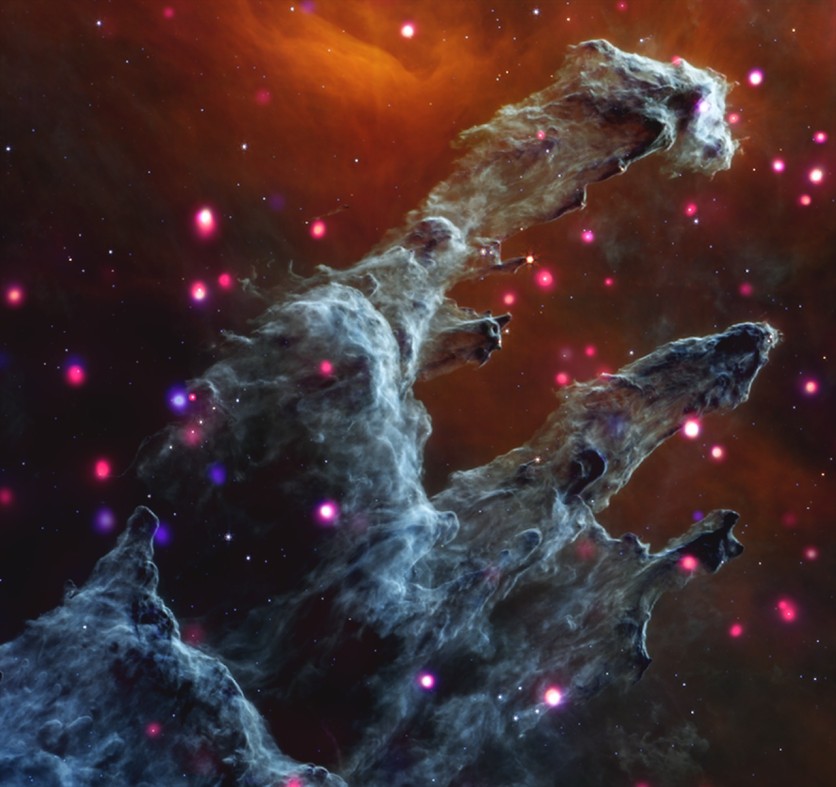NASA's orbiting Chandra X-ray Observatory has unveiled a stunning view of the Eagle Nebula, showcasing X-ray hot stars scattered throughout this celestial wonder.
In a mesmerizing composite image, the Chandra X-ray Observatory combined exposures from various telescopes, including XMM, James Webb Space Telescope, Spitzer, Hubble, and the VLT, to provide an extraordinary glimpse into the star-forming regions of the Eagle Nebula

Iconic Star Pillars
While the iconic star pillars of the Eagle Nebula are not prominent X-ray emitters, the image revealed numerous small, bright X-ray sources in the vicinity. These enigmatic sources, depicted as brilliant dots on the composite image, have sparked intrigue among scientists about their origins and characteristics.
The Eagle Nebula is characterized by its striking pillars of gas and dust, which are often referred to as the "Pillars of Creation." These pillars are immense columns of interstellar material where new stars are actively forming.
The dense clouds of gas and dust within these pillars serve as the birthplaces of new stars, and the immense gravitational forces at work cause the material to collapse and give rise to young stars.
Researchers are currently investigating the stars responsible for these intense X-ray emissions. Some of these X-ray hot stars are believed to be young, low-mass stars that have recently formed. On the other hand, others are speculated to be older, high-mass stars that have reached a mature stage.
Among the prominent features of the image are the Evaporating Gaseous Globules (EGGS), which are visible in ordinary light but are not currently generating enough heat to emit X-rays. Instead, the focus lies on the scattered X-ray hot stars that pepper the frame, captivating astronomers and space enthusiasts alike.
Significant Laboratory for Stars
The Eagle Nebula, also known as Messier 16 (M16), has long been a subject of fascination for astronomers. Situated approximately 7,000 light-years away from Earth in the Serpens constellation, this massive star-forming region continues to astound scientists with its intricate structures and profound stellar birth.
The composite image showcases the unique capabilities of various telescopes, each capturing a different spectrum of light. While Chandra and XMM offer insight into the X-ray domain, JWST and Spitzer provide infrared observations, and Hubble and the VLT contribute visible light perspectives.
The Eagle Nebula serves as a significant laboratory for studying star formation and the processes shaping the early stages of stellar evolution. It offers valuable insights into the birth of stars, the interaction of young stars with their environment, and the overall dynamics of interstellar gas and dust.
Related Article : Happy 1-Year Anniversary! Look Back at NASA's James Webb Space Telescope's Most Awe-inspiring Images Yet

ⓒ 2025 TECHTIMES.com All rights reserved. Do not reproduce without permission.




